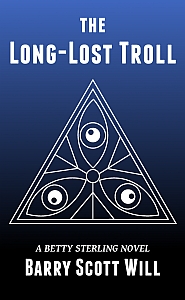Ask most fans of “Western-style” RPG video games who the top developers are and they will probably give you, in some order: Bethesda, BioWare, and Blizzard. Throw out Blizzard because they make primarily action-RPGs, and you have Bethesda and BioWare constantly releasing a stream of high-quality, well-reviewed hits. However, the ‘B’ at the beginning of the names and the genre of video games they share are the only things these two companies have in common. Their games are as different as night and day.
If BioWare games are of the “Choose your own adventure” style, then Bethesda games are closer to MadLibs. BioWare’s games are heavy on narrative. You play each “chapter” in the story and, at the end of the chapter, you can pick where to go next and your choices have some effect on the story, but you still get to the end no matter what. Along the way you can pick up side quests to help fill in the spaces of your adventure, but the focus is always on playing out the main story.
Bethesda games throw narrative out the window. Each Bethesda game consists of multiple short stories that are so separate they aren’t even on a first-name basis with each other. Beyond those are even shorter stories that you won’t discover unless you just go poking your nose in where it doesn’t belong, which is sort of the point of a Bethesda game. Bethesda games are open-world games because that’s all they really are. I know that sounds obvious, but you can’t produce linear “chapters” like BioWare does unless you have, you know, actual chapters. In a story.
Now, there are good and bad points for each type of game. I happen to love both. But, based on sales figures, gamers love Bethesda’s style more than BioWare’s. So, somebody at BioWare (or at BW’s parent company, Electronic Arts) looked at the sales figures and decided what BioWare needs to sell more games is to make an open world!
:sigh: And so we get Dragon Age: Inquisition. A game that’s BioWare through-and-through—after all, they only know how to make narrative-heavy games—but has such huge “levels[1]” with so much filler, the narrative gets snowed under rather quickly. Peel back the layers and there’s BioWare imprinted everywhere on this game.
Meaningless step-n-fetch quests? Got those. Mini-games? Yep, at least two (there may be more I haven’t discovered yet). Crafting that does you absolutely no good because you loot better stuff from your enemies? Uh huh. Items that don’t drop from enemies until you actually get the quest to collect them? Please, don’t mention it again lest my head explode.
We fans put up with this junk because of the good stuff BioWare throws into their games. Lots of cutscenes with fantastic dialogue. Meaningful and deep relationships. Lots of character (and lots of characters—double meaning intended). Those are all in DAI as well, but it pales with all the not-so-good junk BioWare shovels in to make this an “open-world” game.
What sets Bethesda games apart—and, apparently, attracts more players—is not the open world, it’s the fact there IS NO narrative. The only “motivation” for poking around is poking around. You can’t just take the open world concept (which BioWare didn’t even really do properly), and shoehorn epic narrative into it. You end up with lots of empty space when you do that, so BioWare filled the empty space with junk.
Lots and lots of junk. I’m only a dozen hours into the game and my quest log looks like the punch list for the healthcare.gov Web site designer.
It’s a slog, but I’ll keep slogging away. The narrative requires it.
[1] Don’t be fooled. DAI is NOT an “open world” game. It’s a game with individual levels. It’s just each level is huge. Sort of like the planet exploration from the first Mass Effect game. But with more mind-numbing junk thrown around the open space.


